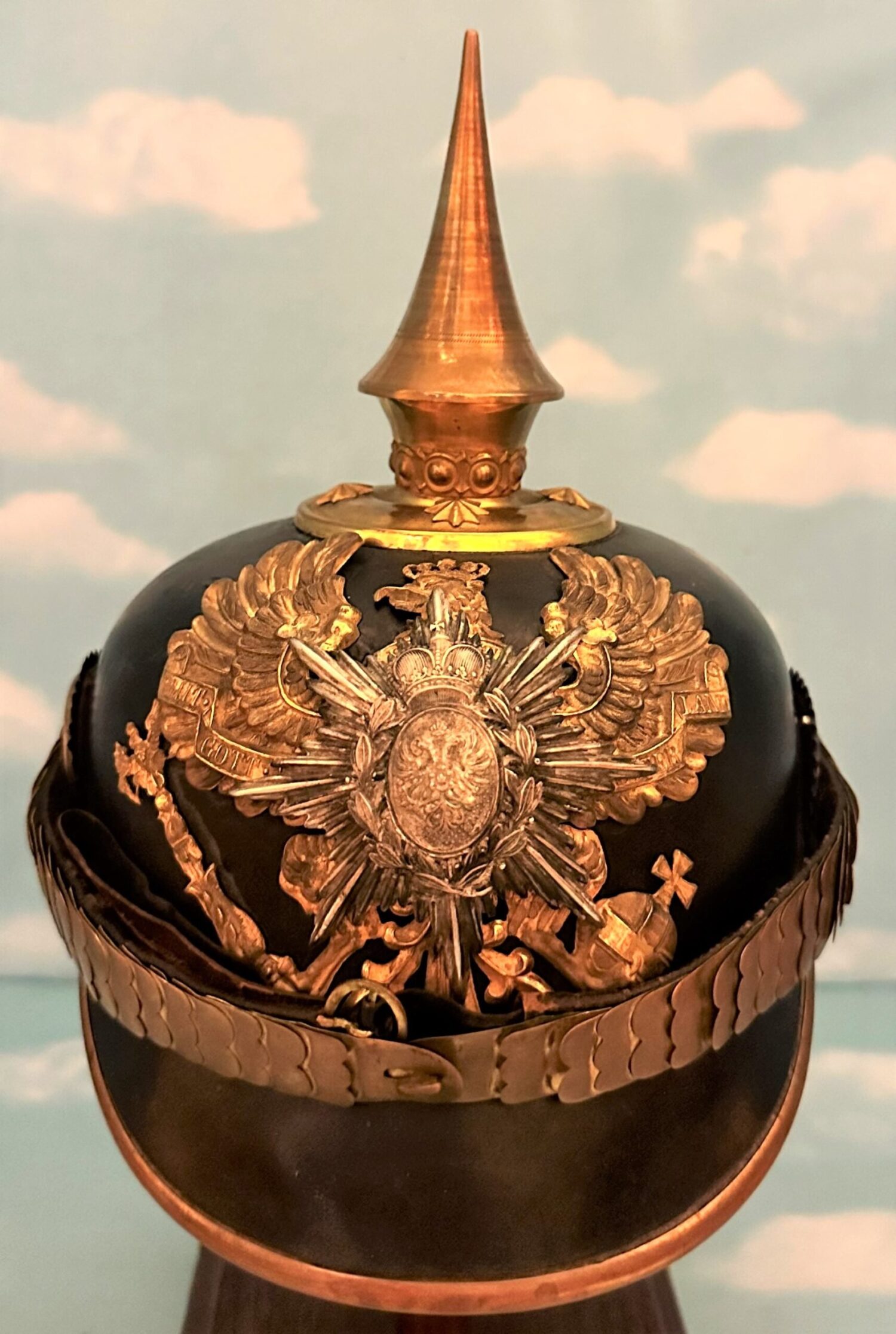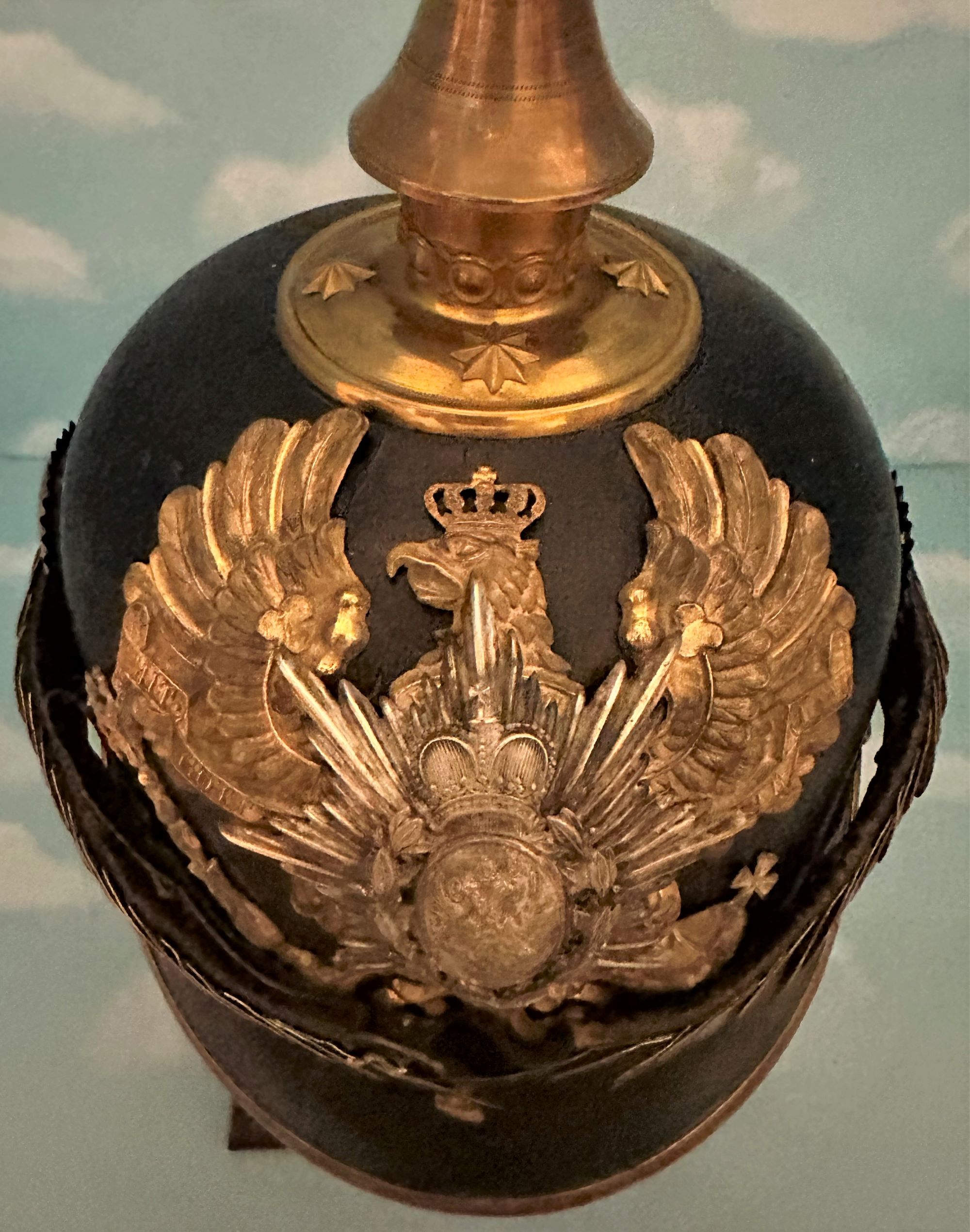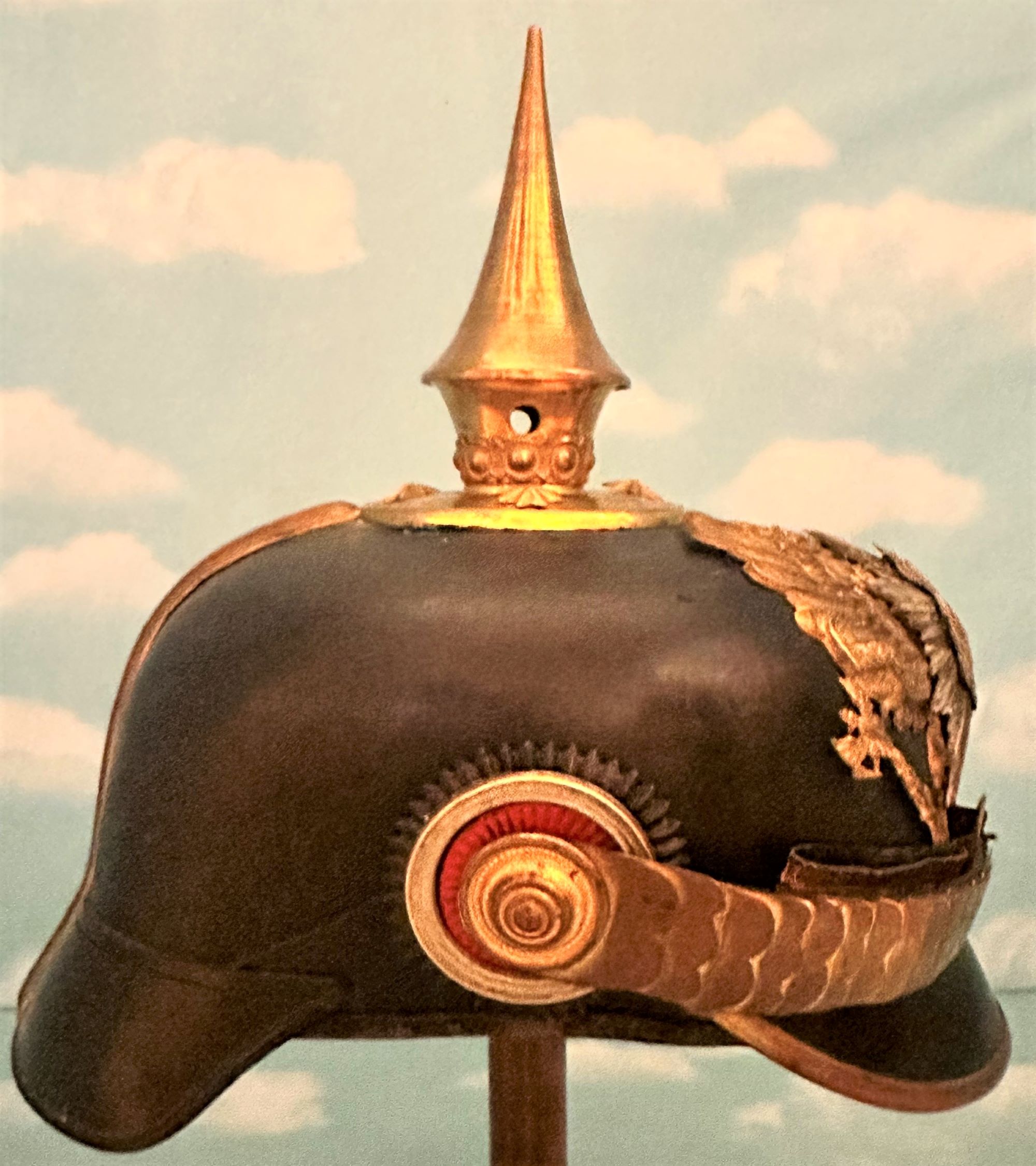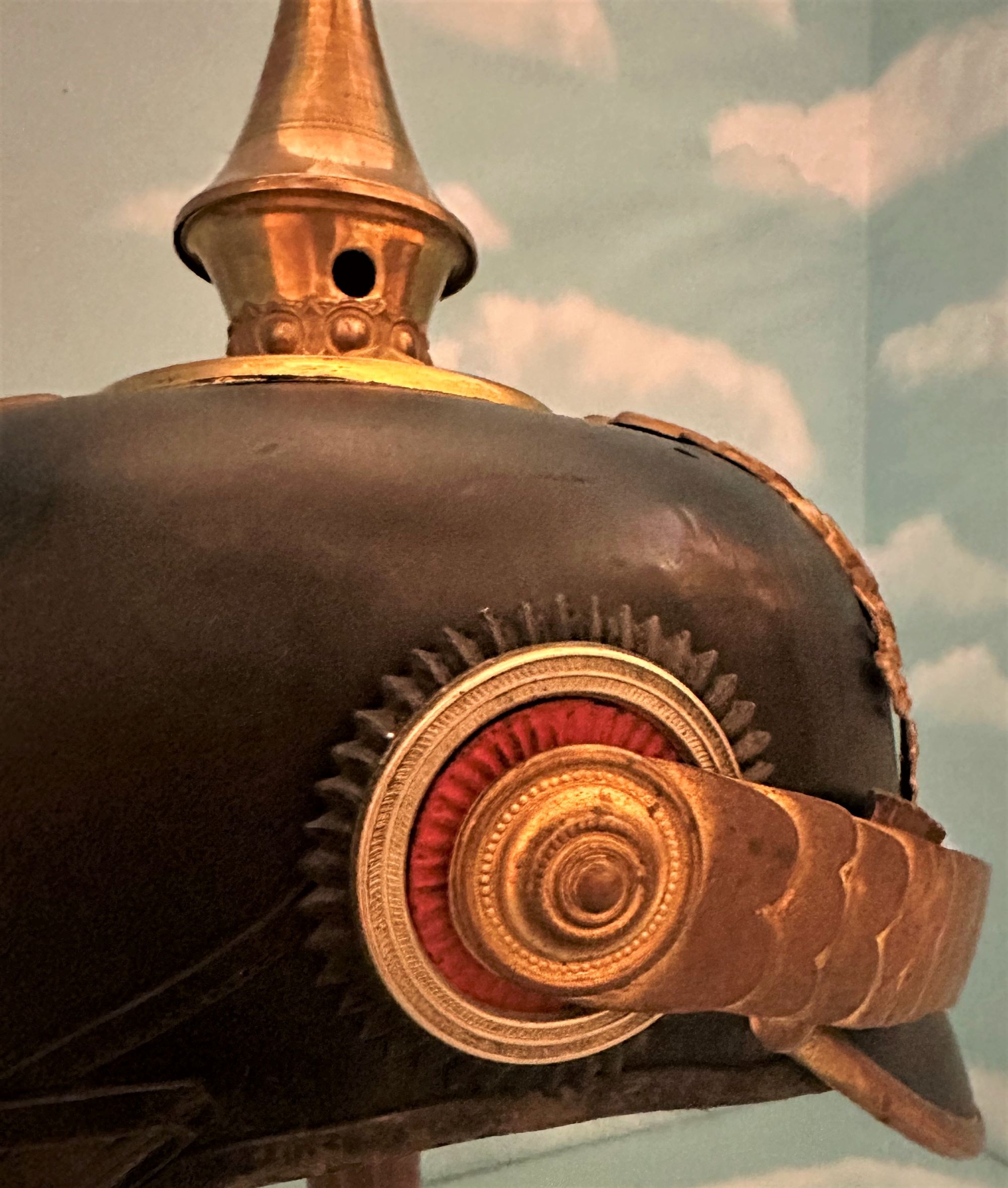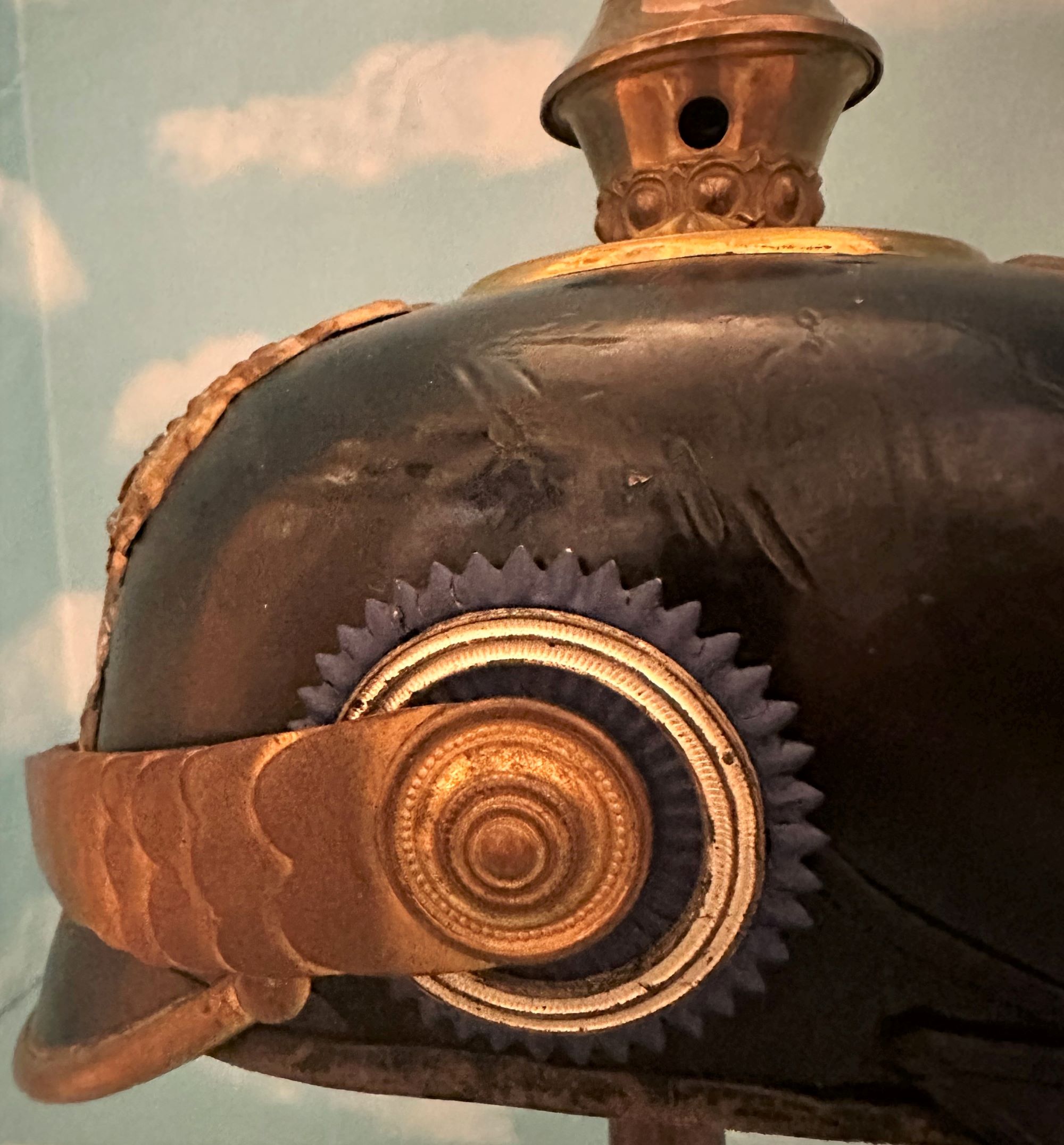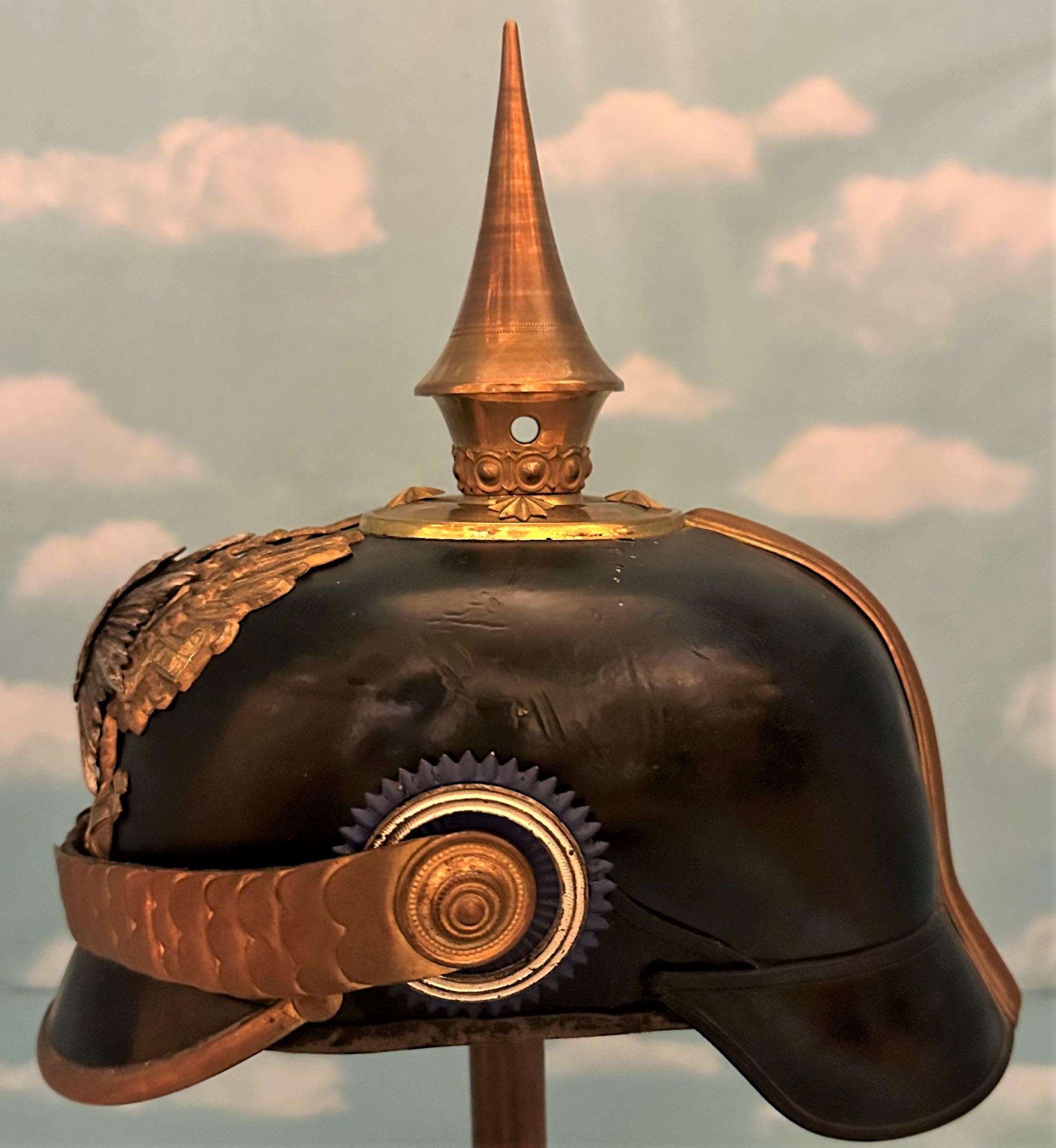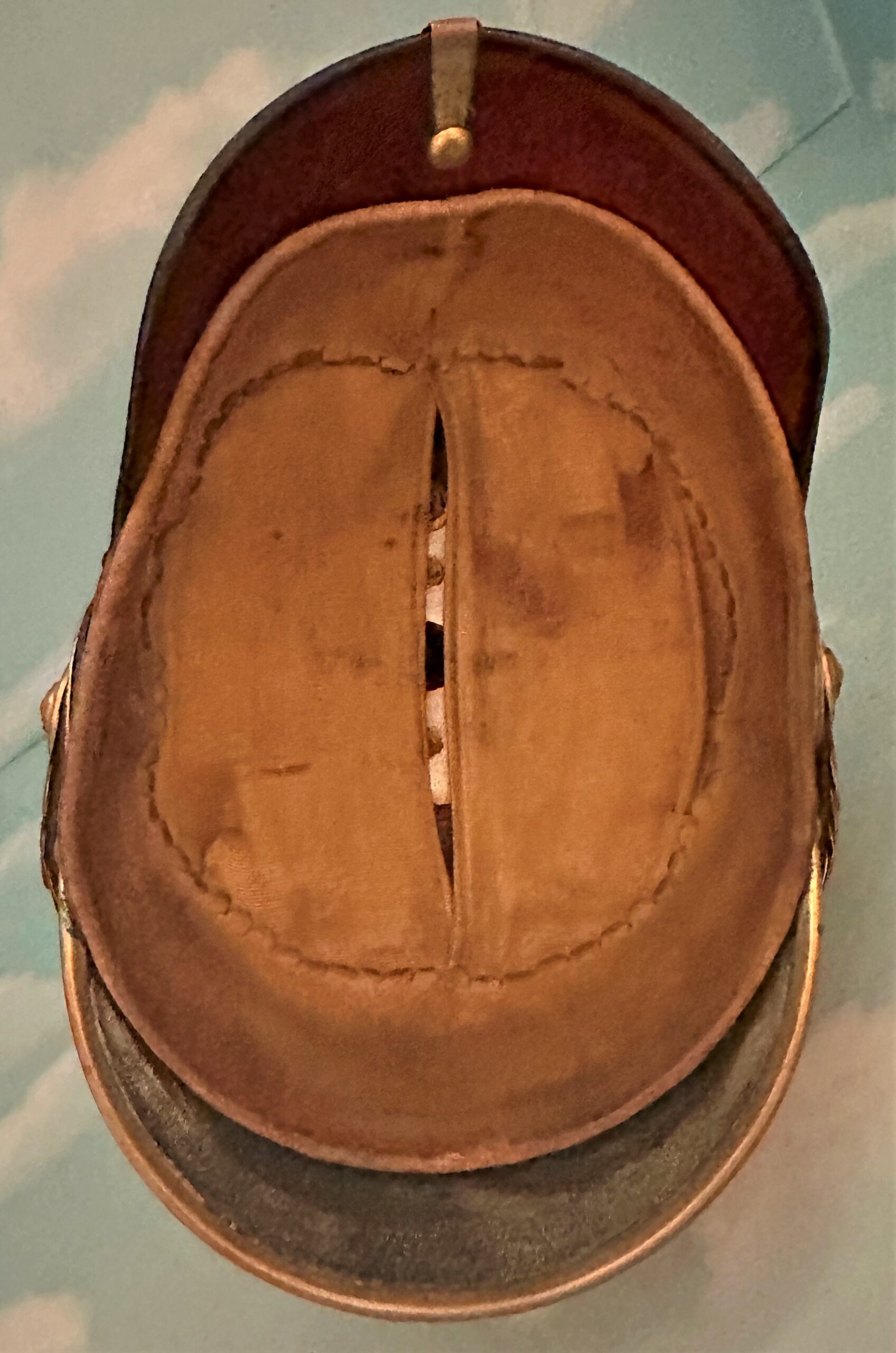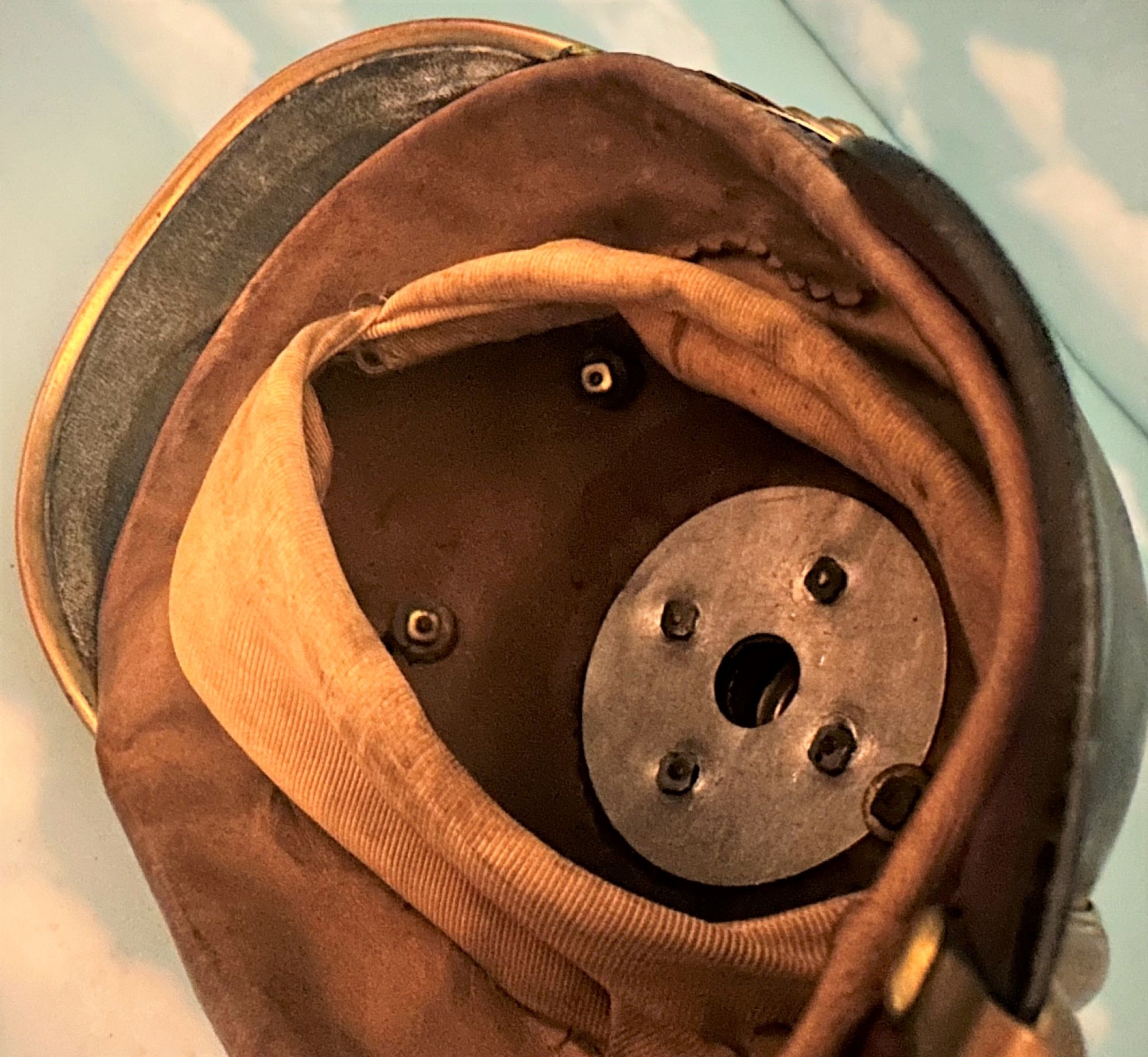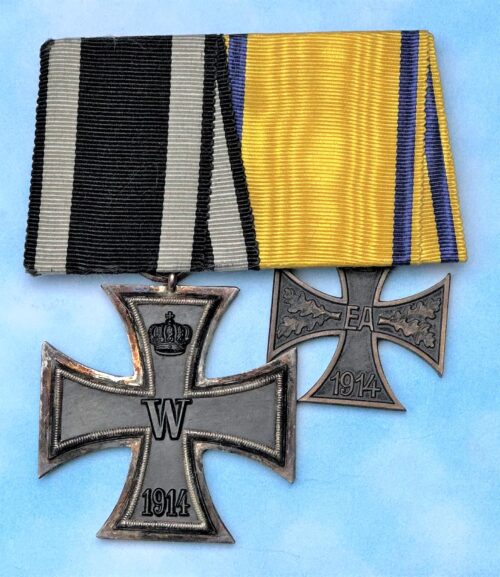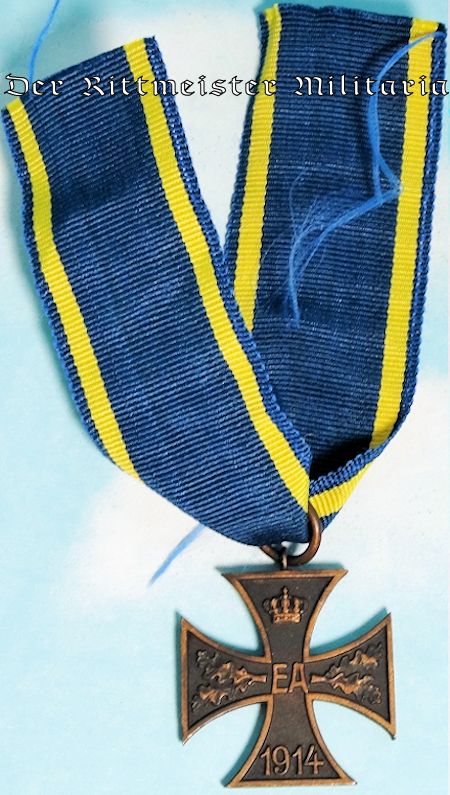Description
Today, we proudly present to you an exceptionally rare pickelhaube, one that carries with it a unique history and significance. This distinctive headgear belonged to an elite unit within the German army, making it a remarkable piece of military heritage. According to our expert, Jim Turinetti, whose authoritative series of books delves into the headdress of the German army, this pickelhaube was worn by less than 0.1% of the entire German military. To put this into perspective, it is doubtful that there were ever more than twenty officers in this particular bataillone at any given time. What makes this pickelhaube even rarer is its association with a reserve officer, as there were consistently fewer reserve officers in any unit, further elevating its historical significance. The same can be said for One Year Volunteers.
This unique helmet is associated with the 7. Thüringisches Infanterie-Regiment Nr 96, which has a storied history dating back to its formation in 1702. It came under Prussian control following the Austro-Prussian War of 1866 and was reconstituted in 1867. Like many regiments absorbed into the Prussian army, this unit retained its past associations and was allowed to display indications of its history. Under Kaiser Wilhelm in 1897, the addition of battle honors and more to the headdress was permitted. In the case of infantry, artillery, and most cavalry regiments, the State kokarde was added alongside the Reich kokarde. Notably, this regiment was a composite unit, with Bataillone I being Prussian, Bataillone II hailing from Reuss, and Bataillone III representing Schwarzburg-Rudolstadt, with its base in Rudolstadt. This regiment was assigned to the XI. Armeekorps, and during the years leading up to WWI, the region had a population of approximately 97,000, with Rudolstadt serving as its capital and hosting the bataillone.
Examining the exterior of the helmet, the leather body remains in excellent condition, devoid of major issues as evidenced in the accompanying photographs. All the hardware, including the chinscales, front visor trim, officer stars mounted on the base, wappen, and the imposing spike, are crafted from brass. The only exceptions are the coat of arms for Schwarzburg-Rudolstadt and the reserve officer cross, both of which are silver-toned. The final exterior details include the correct State and Reich kokarden.
Turning our attention to the interior of the helmet, we find a well-preserved leather sweatband, offering comfort to the wearer. Attached to this sweatband is a finely crafted silk liner, designed to protect the head from the helmet’s interior. Beneath the silk liner, all the original hardware is intact, with no double holes or alterations. What adds an exciting layer of history is a label pasted into the interior. This label, originating from a military effects firm in Berlin, indicates a size “55,” which was standard for the time. (We encourage you to closely examine the label for any additional information or names if possible.)
In conclusion, we present to you this exceptionally rare pickelhaube, a true treasure for collectors and enthusiasts alike. Such specimens have been known to command prices exceeding $10,000, making this example an extraordinary value given its remarkable condition and historical significance. Don’t miss the opportunity to own a piece of military history that truly stands out from the rest.
